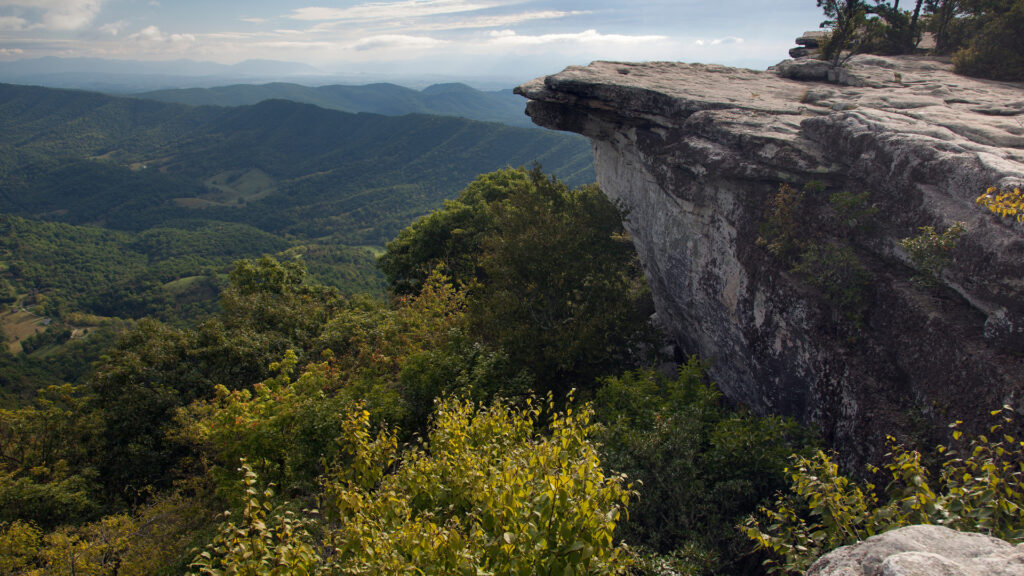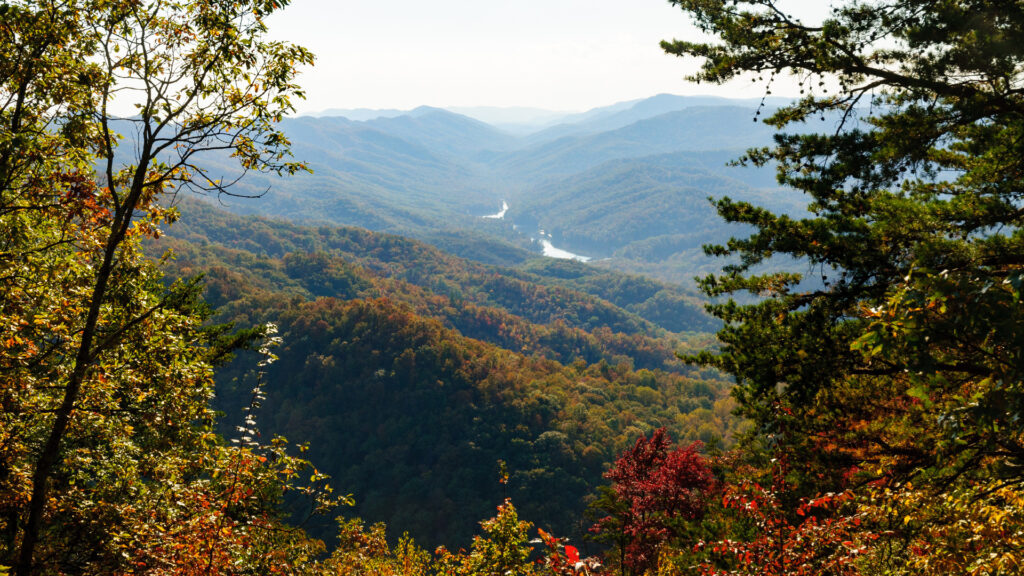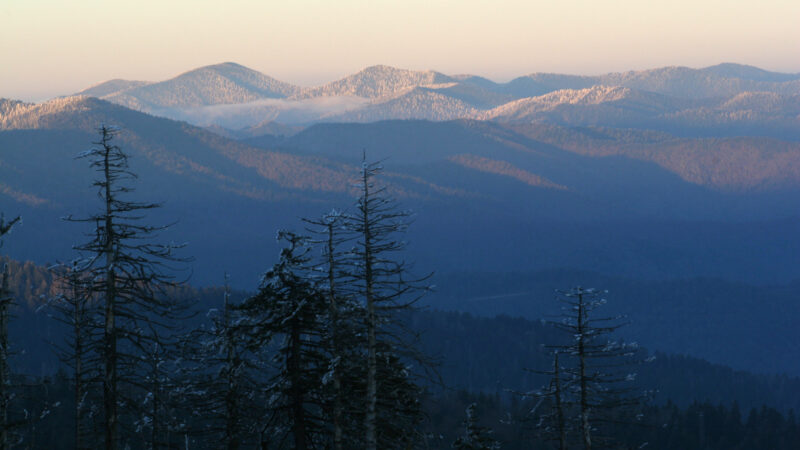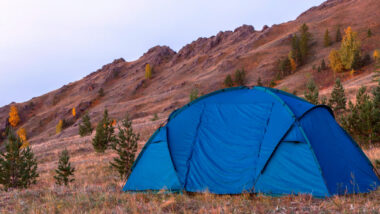Table of Contents Show
The national parks in Tennessee provide an excellent opportunity to experience the Volunteer State. They show off the state’s diverse range of natural beauty and outdoor recreational opportunities.
Whether you enjoy hiking, fishing, or simply admiring the stunning scenery, Tennessee’s national parks offer something for everyone. If you’re planning a trip to this south and want to spend time outdoors, keep reading.
Today, we’re sharing all you need to know about the national parks in Tennessee. Let’s get started!
What Are National Parks?
National parks are protected areas of land designated and managed by the National Park Service (NPS). The lands receive protection for their natural and cultural resources and public enjoyment. These parks offer recreational opportunities like hiking, camping, wildlife viewing, and more.
Many people make the mistake of believing that the country only has 63 national parks. However, we have more than 400 national park units with various designations.
Of those 400+ parks, 63 have a national park designation. Nonetheless, the national park units house some of the most iconic and cherished natural landmarks in the United States.
How Many National Parks Are in Tennessee?
Tennessee has one national park but 13 national park units, which welcome millions of visitors annually.
Most guests visit Great Smoky Mountain National Park, the country’s most visited park.
However, the dozen other national park units are full of natural beauty and rich history. Don’t miss an opportunity to experience any of these incredible places.
When Is the Best Time to Visit Tennessee?
Tennessee is a great state to visit year-round. When you should go greatly depends on your personal preference and travel plans. Each season has unique advantages and disadvantages that you must consider.
Visiting in the spring allows you to see wildflowers blooming with typically mild weather. However, some springs are cooler and wetter than others. This can make it difficult if you want to spend time outside.
Summer is typically a dryer season and provides plenty of daylight, but it also brings peak tourist season.
One of the best times to visit Tennessee is in the fall when the leaves change. You’ll have less rain and cooler temperatures. It’s the perfect opportunity to get out and enjoy a hike or to spend time in nature.
Additionally, a scenic drive this time of year can serve as a magical experience with beautiful landscapes and tremendous colors.
Winter in the Volunteer State can be unpredictable. Most of the state typically receives minimal snowfall, but the eastern portion can experience over 60 inches of snow each season. But, if you want to get out and enjoy winter activities, you have many places to do so.
If we had to pick one season to visit, we’d lean toward fall. There’s something special about seeing the landscapes painted with color as the seasons change. If you plan it right, you can experience some of the most popular locations with limited crowds when kids return to school.

About Tennessee National Parks
Great Smoky Mountain National Park is the only designated national park in Tennessee.
However, you can learn so much about this incredible national park. Here’s why you should consider visiting it.
Great Smoky Mountains National Park
Great Smoky Mountains National Park sits in the southern Appalachian Mountains along the border of Tennessee and North Carolina. It was established in 1934 and is the most visited national park in the United States.
The park covers over 500,000 acres of land and features diverse landscapes, including rolling hills, waterfalls, and towering mountains. Additionally, it’s a hiker’s dream as it offers over 800 miles of hiking trails.
The park is widely known for its biodiversity, home to more than 19,000 species of plants and animals. Visitors can spot wildlife such as black bears, elk, and many species of birds. In addition, in the spring, you can experience colorful wildflowers.
The park is also home to historic structures, including log cabins and grist mills, that showcase the cultural heritage of the region’s early settlers.
Whether you want to immerse yourself in nature or learn about the region’s history and culture, the Great Smoky Mountains National Park is a must-visit destination.
Keep in Mind: Ready to visit Great Smoky Mountains? Here’s How to Plan an RV Trip to the Smoky Mountains!
Explore Other National Park Designations in Tennessee
Great Smoky Mountain National Park may get all the attention, but there are other national park units to explore in Tennessee.
Let’s dive in and look at other national park units you should visit in the Volunteer State.
Appalachian Trail National Scenic Trail
Approximately 70 of the 2,200 miles of the Appalachian Trail run through the eastern portion of the state.
If you were to hike every one of these miles, you’d pass through the Great Smoky Mountains National Park and the Cherokee National Forest in Tennessee. Here you’ll have views of rolling hills, scenic vistas, and dense forests.
However, don’t take this trail lightly. It is known for having challenging terrain, steep inclines, and dangerous rocky sections. Even the most experienced hikers find the trail challenging and a good workout.
Luckily, you don’t have to hike all 70 miles to appreciate the beauty of the trail. The trail passes through several historic towns, including Hot Springs and Erwin, making it easy to hop on and off.
Furthermore, you have many spots for an out-and-back hike based on the length or terrain you prefer.

Big South Fork National River & Recreation Area
Big South Fork National River and Recreation Area is a protected natural area split between Tennessee and Kentucky.
It was established in 1974 and covers over 125,000 acres of land, including parts of the Cumberland Plateau and the Big South Fork of the Cumberland River.
The park features diverse landscapes, including rolling hills, sandstone cliffs, and deep gorges, with no shortage of opportunities for outdoor recreation. Visitors can enjoy hiking, camping, fishing, rafting, and scenic drives through the park’s stunning landscapes.
Chickamauga and Chattanooga National Military Park
Chickamauga and Chattanooga National Military Park is a national park unit located in Georgia and Tennessee.
It was established in 1890 to commemorate the Civil War battles of the Battle of Chickamauga, Lookout Mountain, and Missionary Ridge.
Visitors of the park can enjoy guided tours, hiking trails, monuments, and historical exhibits. History buffs may enjoy touring the park, seeing the preserved battlefields, and exploring the surrounding area to learn about the Civil War.
Cumberland Gap National Historical Park
The Cumberland Gap National Historical Park is a U.S. National Historical Park located in Kentucky, Virginia, and Tennessee.
It was established in 1940 and preserved the historic Cumberland Gap, a natural break in the Appalachian Mountains. It served as a crucial passage for early American pioneers moving westward.
The park features hiking trails, historical exhibits, and scenic overlooks. It offers visitors the opportunity to experience the natural beauty of the area and learn about the cultural and historical significance of the Cumberland Gap.

Fort Donelson National Battlefield
Fort Donelson National Battlefield, one of the national parks in Tennessee, located near Dover, Tenn., commemorates the 1862 Battle of Fort Donelson.
The fort was the site of one of the first major Union victories in the Civil War, leading to the eventual Union control of the Cumberland River and the capture of Nashville, Tenn.
Today, the park features several historic sites, including the Fort Donelson National Cemetery, the Dover Hotel Museum, and the Fort Donelson Visitors Center.
These sites provide visitors with an understanding of the historical and cultural significance of the battle and its impact on the region.
Visitors can also tour the park and walk the grounds, where they can see the remains of the fortifications and learn about the events that took place during the Battle of Fort Donelson. If you enjoy learning about history or the civil war, this is a national park unit you won’t want to miss.
Shiloh National Military Park
Shiloh National Military Park is in Shiloh, Tenn., and Corinth, Miss. The park was established in 1894 but became a national military park unit in 1933.
The goal of this NPS unit is to protect the land and educate visitors about the two-day battle in Shiloh during the Civil War. They battled over control of the railroad junction in Corinth, which served as a key component during the Civil War.
If you visit Shiloh National Military Park, explore the exhibits, watch the films, and take the self-guided auto-tour. It’s a fantastic opportunity to learn about this important historic location.
You can experience sites like Shiloh National Cemetery, Shiloh Indian Mounds Sites, and General Johnston’s death site.
Overmountain Victory National Historic Trail
Overmountain Victory National Historic Trail runs for 330 miles through four states.
The route marks the path marched by the patriot militia in 1780 as a part of the Kings Mountain campaign. You can experience the trail using the state highway system or walking on 87 miles of walking paths.
Each September and October, the area hosts festivals, shows, and demonstrations for guests to learn about life during the late 1700s.
These events can help you learn about and understand the complexities that men and women experienced during this time. You may gain a new appreciation for the many obstacles they faced.
Keep in Mind: Tennessee has its fair share of campgrounds and RV parks, but these are The Highest Rated RV Parks in the Volunteer State!
Stones River National Battlefield
The last of the national parks in Tennessee is Stones River National Battlefield in Murfreesboro, Tenn., approximately 28 miles southeast of Nashville.
This 570-acre park sits along the Stones River and was the site of a battle on Dec. 31, 1862, during the American Civil War. The battle lasted three days and resulted in a crucial Union victory.
Visitors to the park can pay their respects to the lives lost by visiting the on-site cemetery. It has 6,100 interments, 2,562 of which remain unidentified.
Additionally, the park offers interpretive programs and outdoor activities. Cyclists, walkers, and joggers enjoy the paved paths. And the scenery is perfect for still photography and video productions.

Experience National Parks in the Volunteer State
National parks in the Volunteer State are the perfect opportunity to get outside, learn about nature, and discover the history you learned in school.
Experiencing these sights in person can bring a new appreciation of this beautiful state and its rich history. If your travel plans will take you through this part of the country, take the time to explore the national parks in Tennessee.
Which one caught your eye?






